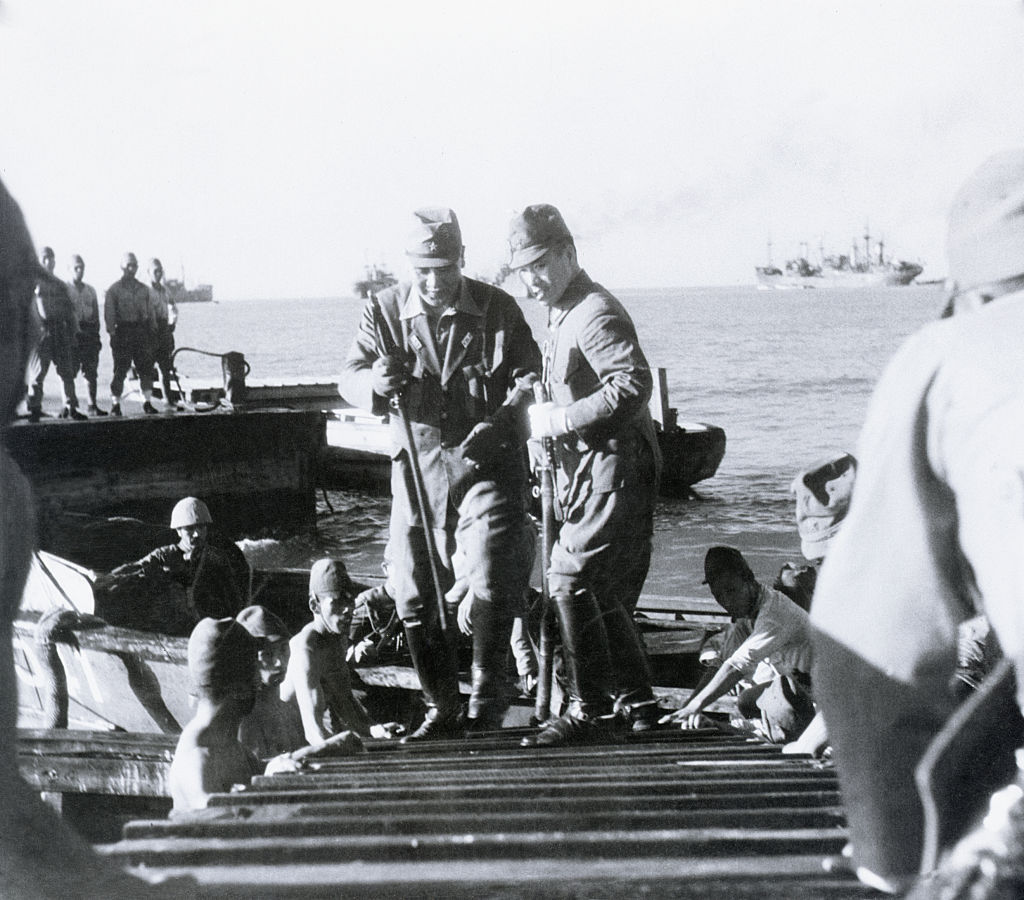
Eighty-one years ago, on Dec. 7, 1941, the Japanese bombed U.S. Pacific fleet and Army and Navy aircraft at Pearl Harbor on the Hawaiian island of Oahu, killing some 2,400 military personnel and civilians.
The attack marked the beginning of America’s combat role in the Second World War. But Pearl Harbor wasn’t the only attack on allied positions in the Pacific that week.
The Japanese launched assaults on the American territories Guam, Wake Island, the Philippines, and British territories of Hong Kong, Malaya, and Burma. As the National World War II Museum explains Japan’s strategy back then: “As Adolf Hitler’s armies rampaged across Europe, overrunning Germany’s neighbors in 1939-40 and threatening to invade the British Isles, the European colonial empires in Asia lay nearly undefended, ripe for the picking: the Malay Peninsula, the Dutch East Indies, Indochina. Rich sources of raw materials lay in all of them, rubber, tin, and especially oil, the precious lifeblood of any modern economy.”
Private Robert Brooks, a tank driver in the 192nd Tank Battalion from Kentucky, had only been in the Philippines for a day when he was killed in the early afternoon on Dec. 8 by a Japanese bomb.
“He was the first casualty in the U.S. Armored Forces during the war,” says Matthew F. Delmont, author of the new book Half American: The Epic Story of African Americans Fighting World War II at Home and Abroad.
But during the funeral arrangements, it was revealed that Brooks was a Black American serving in an all-white unit.
“The Army didn’t know Brooks was Black until his parents, sharecroppers from Kentucky, arrived for his funeral,” says Delmont. “Brooks was light-skinned and declined to correct the draft board official who listed him as white.”
Despite a policy of segregation within the U.S. armed forces, the Army proceeded with its memorial. On Dec. 23, the fallen private’s family attended a ceremony that dedicated the main parade ground at Kentucky’s Fort Knox base Brooks Field. Six generals showed up.
More from TIME
“In death there is no grade or rank,” General Jacob Devers, chief of the Armored Force, told attendees. “And in this, the greatest democracy the world has ever known, neither riches nor poverty, neither creed nor race, draws a line of demarcation in this hour of national crisis.” In his book, Delmont points out that it’s ironic that the general made a statement like this at a segregated base in a segregated state.
Not all Black veterans received such respect from their fellow servicemen or civilians. For most of the war, Black Americans couldn’t serve in combat roles, and were treated like second-class citizens. Some Black veterans who returned to the U.S. after the war were murdered or brutally attacked, like Marco Snipes, a Black World War II veteran who was lynched for voting in Georgia.
Brooks’ death in the Philippines highlights two major storylines from World War II that are often overshadowed by remembrances of the larger milestones like Pearl Harbor Day. One is the brutal Japanese invasion and occupation of Southeast and East Asia. In the Philippines alone, the death toll is estimated between 500,000 and 1 million civilians and military personnel. The other storyline is the pervasive and systemic racism present in the U.S. military during the war.
As Delmont puts it, “Understanding the fact that the military was fully segregated—that they’re even segregating blood despite having no scientific basis to do that—that helps to both give us a more honest story of World War II, but also, hopefully, help us understand that some of the racism and racial dynamics we’re living through today are really just a continuation of things that have been going on for decades.”
More Must-Reads from TIME
- Cybersecurity Experts Are Sounding the Alarm on DOGE
- Meet the 2025 Women of the Year
- The Harsh Truth About Disability Inclusion
- Why Do More Young Adults Have Cancer?
- Colman Domingo Leads With Radical Love
- How to Get Better at Doing Things Alone
- Michelle Zauner Stares Down the Darkness
Write to Olivia B. Waxman at olivia.waxman@time.com